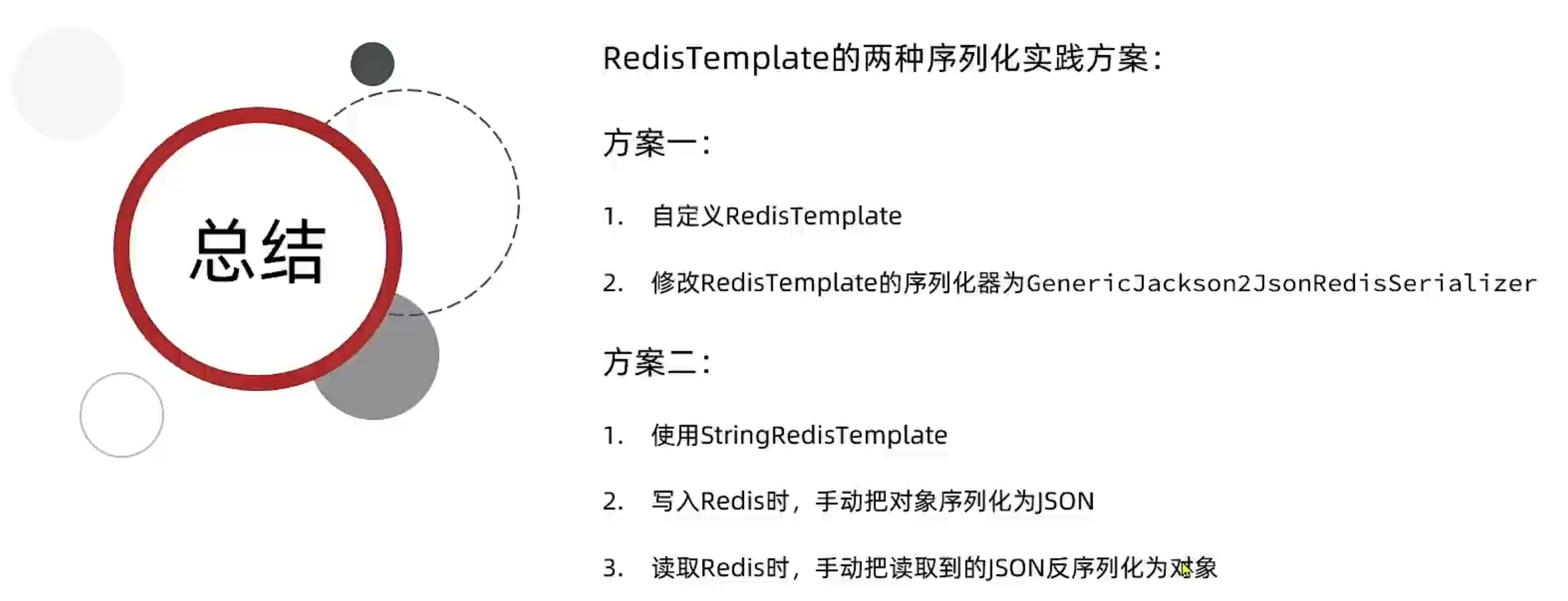场景描述
在应用开发中无论是出于工程组织效率还是开发体验的考虑,开发者都需要对项目进行模块间解耦,此时需要构建一套用于模块间组件跳转、数据通信的路由框架。
业界常见的实现方式是在编译期生成路由表。
1. 实现原理及流程
- 在编译期通过扫描并解析ets文件中的自定义注解来生成路由表和组件注册类
- Har中的rawfile文件在Hap编译时会打包在Hap中,通过这一机制来实现路由表的合并
- 自定义组件通过wrapBuilder封装来实现动态获取
- 通过NavDestination的Builder机制来获取wrapBuilder封装后的自定义组件
2. 使用ArkTS自定义装饰器来代替注解的定义
由于TS语言特性,当前只能使用自定义装饰器
使用@AppRouter装饰器来定义路由信息
// 定义空的装饰器
export function AppRouter(param:AppRouterParam) {
return Object;
}
export interface AppRouterParam{
uri:string;
}
自定义组件增加路由定义
@AppRouter({ uri: "app://login" })
@Component
export struct LoginView {
build(){
//...
}
}
3. 实现动态路由模块
定义路由表(该文件为自动生成的路由表)
{
"routerMap": [
{
"name": "app://login", /* uri定义 */
"pageModule": "loginModule", /* 模块名 */
"pageSourceFile": "src/main/ets/generated/RouterBuilder.ets", /* Builder文件 */
"registerFunction": "LoginViewRegister" /* 组件注册函数 */
}
]
}
应用启动时,在EntryAbility.onCreate中加载路由表
onCreate(want: Want, launchParam: AbilityConstant.LaunchParam): void {
DynamicRouter.init({
libPrefix: "@app", mapPath: "routerMap"
}, this.context);
}
export class DynamicRouter {
// 路由初始化配置
static config: RouterConfig;
// 路由表
static routerMap: Map<string, RouterInfo> = new Map();
// 管理需要动态导入的模块,key是模块名,value是WrappedBuilder对象,动态调用创建页面的接口
static builderMap: Map<string, WrappedBuilder<Object[]>> = new Map();
// 路由栈
static navPathStack: NavPathStack = new NavPathStack();
// 通过数组实现自定义栈的管理
static routerStack: Array<RouterInfo> = new Array();
static referrer: string[] = [];
public static init(config: RouterConfig, context: Context) {
DynamicRouter.config = config;
DynamicRouter.routerStack.push(HOME_PAGE)
RouterLoader.load(config.mapPath, DynamicRouter.routerMap, context)
}
//...
}
路由表存放在src/main/resources/rawfile目录中,通过ResourceManager进行读取
export namespace RouterLoader {
export function load(dir: string, routerMap: Map<string, RouterInfo>, context: Context) {
const rm: resourceManager.ResourceManager = context.resourceManager;
try {
rm.getRawFileList(dir)
.then((value: Array<string>) => {
let decoder: util.TextDecoder = util.TextDecoder.create('utf-8', {
fatal: false, ignoreBOM: true
})
value.forEach(fileName => {
let fileBytes: Uint8Array = rm.getRawFileContentSync(`${dir}/${fileName}`)
let retStr = decoder.decodeWithStream(fileBytes)
let routerMapModel: RouterMapModel = JSON.parse(retStr) as RouterMapModel
loadRouterMap(routerMapModel, routerMap)
})
})
.catch((error: BusinessError) => {
//...
});
} catch (error) {
//...
}
}
}
根据URI跳转页面时,通过动态import并执行路由表中定义的registerFunction方法来实现动态注册组件
Button("跳转")
.onClick(()=>{
DynamicRouter.pushUri("app://settings")
})
export class DynamicRouter {
//...
public static pushUri(uri: string, param?: Object, onPop?: (data: PopInfo) => void): void {
if (!DynamicRouter.routerMap.has(uri)) {
return;
}
let routerInfo: RouterInfo = DynamicRouter.routerMap.get(uri)!;
if (!DynamicRouter.builderMap.has(uri)) {
// 动态加载模块
import(`${DynamicRouter.config.libPrefix}/${routerInfo.pageModule}`)
.then((module: ESObject) => {
module[routerInfo.registerFunction!](routerInfo) // 进行组件注册,实际执行了下文中的LoginViewRegister方法
DynamicRouter.navPathStack.pushDestination({ name: uri, onPop: onPop, param: param });
DynamicRouter.pushRouterStack(routerInfo);
})
.catch((error: BusinessError) => {
console.error(`promise import module failed, error code: ${error.code}, message: ${error.message}.`);
});
} else {
DynamicRouter.navPathStack.pushDestination({ name: uri, onPop: onPop, param: param });
DynamicRouter.pushRouterStack(routerInfo);
}
}
}
组件注册实际执行的方法为LoginViewRegister(该文件为自动生成的模版代码)
// auto-generated RouterBuilder.ets
import { DynamicRouter, RouterInfo } from '@app/dynamicRouter/Index'
import { LoginView } from '../components/LoginView'
@Builder
function LoginViewBuilder() {
LoginView()
}
export function LoginViewRegister(routerInfo: RouterInfo) {
DynamicRouter.registerRouterPage(routerInfo, wrapBuilder(LoginViewBuilder))
}
通过wrapBuilder将自定义组件保存在组件表
export class DynamicRouter {
//...
// 通过URI注册builder
public static registerRouterPage(routerInfo: RouterInfo, wrapBuilder: WrappedBuilder<Object[]>): void {
const builderName: string = routerInfo.name;
if (!DynamicRouter.builderMap.has(builderName)) {
DynamicRouter.registerBuilder(builderName, wrapBuilder);
}
}
private static registerBuilder(builderName: string, builder: WrappedBuilder<Object[]>): void {
DynamicRouter.builderMap.set(builderName, builder);
}
// 通过URI获取builder
public static getBuilder(builderName: string): WrappedBuilder<Object[]> {
const builder = DynamicRouter.builderMap.get(builderName);
return builder as WrappedBuilder<Object[]>;
}
}
首页Navigation通过组件表获取自定义组件Builder
@Entry
@Component
struct Index {
build() {
Navigation(DynamicRouter.getNavPathStack()) {
//...
}
.navDestination(this.PageMap)
.hideTitleBar(true)
}
@Builder
PageMap(name: string, param?: ESObject) {
NavDestination() {
DynamicRouter.getBuilder(name).builder(param);
}
}
}
4. 实现路由表生成插件
新建插件目录etsPlugin,建议创建在HarmonyOS工程目录之外
mkdir etsPlugin
cd etsPlugin
创建npm项目
npm init
安装依赖
npm i --save-dev @types/node @ohos/hvigor @ohos/hvigor-ohos-plugin
npm i typescript handlebars
初始化typescript配置
./node_modules/.bin/tsc --init
修改tsconfig.json
{
"compilerOptions": {
"target": "es2021", /* Set the JavaScript language version for emitted JavaScript and include compatible library declarations. */
"module": "commonjs", /* Specify what module code is generated. */
"strict": true, /* Enable all strict type-checking options. */
"esModuleInterop": true, /* Emit additional JavaScript to ease support for importing CommonJS modules. This enables 'allowSyntheticDefaultImports' for type compatibility. */
"forceConsistentCasingInFileNames": true, /* Ensure that casing is correct in imports. */
"skipLibCheck": true, /* Skip type checking all .d.ts files. */
"sourceMap": true,
"outDir": "./lib",
},
"include": [".eslintrc.js", "src/**/*"],
"exclude": ["node_modules", "lib/**/*"],
}
创建插件文件src/index.ts
export function etsGeneratorPlugin(pluginConfig: PluginConfig): HvigorPlugin {
return {
pluginId: PLUGIN_ID,
apply(node: HvigorNode) {
pluginConfig.moduleName = node.getNodeName();
pluginConfig.modulePath = node.getNodePath();
pluginExec(pluginConfig);
},
};
}
修改package.json
{
//...
"main": "lib/index.js",
"scripts": {
"test": "echo "Error: no test specified" && exit 1",
"dev": "tsc && node lib/index.js",
"build": "tsc"
},
//...
}
插件实现流程

- 通过扫描自定义组件的ets文件,解析语法树,拿到注解里定义的路由信息
- 生成路由表、组件注册类,同时更新Index.ets
定义插件配置
const config: PluginConfig = {
builderFileName: "RouterBuilder.ets", // 生成的组件注册类文件名
builderDir: "src/main/ets/generated", // 代码生成路径
routerMapDir: "src/main/resources/rawfile/routerMap", // 路由表生成路径
scanDir: "src/main/ets/components", // 自定义组件扫描路径
annotation: "AppRouter", // 路由注解
viewKeyword: "struct", // 自定义组件关键字
builderTpl: "viewBuilder.tpl", // 组件注册类模版文件
};
插件核心代码:
function pluginExec(config: PluginConfig) {
// 读取指定自定义组件目录下的文件
const scanPath = `${config.modulePath}/${config.scanDir}`;
const files: string[] = readdirSync(scanPath);
files.forEach((fileName) => {
// 对每个文件进行解析
const sourcePath = `${scanPath}/${fileName}`;
const importPath = path
.relative(`${config.modulePath}/${config.builderDir}`, sourcePath)
.replaceAll("\", "/")
.replaceAll(".ets", "");
// 执行语法树解析器
const analyzer = new EtsAnalyzer(config, sourcePath);
analyzer.start();
// 保存解析结果
console.log(JSON.stringify(analyzer.analyzeResult));
console.log(importPath);
templateModel.viewList.push({
viewName: analyzer.analyzeResult.viewName,
importPath: importPath,
});
routerMap.routerMap.push({
name: analyzer.analyzeResult.uri,
pageModule: config.moduleName,
pageSourceFile: `${config.builderDir}/${config.builderFileName}`,
registerFunction: `${analyzer.analyzeResult.viewName}Register`,
});
});
// 生成组件注册类
generateBuilder(templateModel, config);
// 生成路由表
generateRouterMap(routerMap, config);
// 更新Index文件
generateIndex(config);
}
语法树解析流程
- 遍历语法树节点,找到自定义注解@AppRouter
- 读取URI的值
- 通过识别struct关键字来读取自定义组件类名
- 其他节点可以忽略
核心代码:
export class EtsAnalyzer {
sourcePath: string;
pluginConfig: PluginConfig;
analyzeResult: AnalyzeResult = new AnalyzeResult();
keywordPos: number = 0;
constructor(pluginConfig: PluginConfig, sourcePath: string) {
this.pluginConfig = pluginConfig;
this.sourcePath = sourcePath;
}
start() {
const sourceCode = readFileSync(this.sourcePath, "utf-8");
// 创建ts语法解析器
const sourceFile = ts.createSourceFile(
this.sourcePath,
sourceCode,
ts.ScriptTarget.ES2021,
false
);
// 遍历语法节点
ts.forEachChild(sourceFile, (node: ts.Node) => {
this.resolveNode(node);
});
}
// 根据节点类型进行解析
resolveNode(node: ts.Node): NodeInfo | undefined {
switch (node.kind) {
case ts.SyntaxKind.ImportDeclaration: {
this.resolveImportDeclaration(node);
break;
}
case ts.SyntaxKind.MissingDeclaration: {
this.resolveMissDeclaration(node);
break;
}
case ts.SyntaxKind.Decorator: {
this.resolveDecorator(node);
break;
}
case ts.SyntaxKind.CallExpression: {
this.resolveCallExpression(node);
break;
}
case ts.SyntaxKind.ExpressionStatement: {
this.resolveExpression(node);
break;
}
case ts.SyntaxKind.Identifier: {
return this.resolveIdentifier(node);
}
case ts.SyntaxKind.StringLiteral: {
return this.resolveStringLiteral(node);
}
case ts.SyntaxKind.PropertyAssignment: {
return this.resolvePropertyAssignment(node);
}
}
}
resolveImportDeclaration(node: ts.Node) {
let ImportDeclaration = node as ts.ImportDeclaration;
}
resolveMissDeclaration(node: ts.Node) {
node.forEachChild((cnode) => {
this.resolveNode(cnode);
});
}
resolveDecorator(node: ts.Node) {
let decorator = node as ts.Decorator;
this.resolveNode(decorator.expression);
}
resolveIdentifier(node: ts.Node): NodeInfo {
let identifier = node as ts.Identifier;
let info = new NodeInfo();
info.value = identifier.escapedText.toString();
return info;
}
resolveCallExpression(node: ts.Node) {
let args = node as ts.CallExpression;
let identifier = this.resolveNode(args.expression);
this.parseRouterConfig(args.arguments, identifier);
}
resolveExpression(node: ts.Node) {
let args = node as ts.ExpressionStatement;
let identifier = this.resolveNode(args.expression);
if (identifier?.value === this.pluginConfig.viewKeyword) {
this.keywordPos = args.end;
}
if (this.keywordPos === args.pos) {
this.analyzeResult.viewName = identifier?.value;
}
}
resolveStringLiteral(node: ts.Node): NodeInfo {
let stringLiteral = node as ts.StringLiteral;
let info = new NodeInfo();
info.value = stringLiteral.text;
return info;
}
resolvePropertyAssignment(node: ts.Node): NodeInfo {
let propertyAssignment = node as ts.PropertyAssignment;
let propertyName = this.resolveNode(propertyAssignment.name)?.value;
let propertyValue = this.resolveNode(propertyAssignment.initializer)?.value;
let info = new NodeInfo();
info.value = { key: propertyName, value: propertyValue };
return info;
}
}
使用模版引擎生成组件注册类
使用Handlebars生成组件注册类
const template = Handlebars.compile(tpl);
const output = template({ viewList: templateModel.viewList });复制
模版文件viewBuilder.tpl示例:
// auto-generated RouterBuilder.ets
import { DynamicRouter, RouterInfo } from '@app/dynamicRouter/Index'
{{#each viewList}}
import { {{viewName}} } from '{{importPath}}'
{{/each}}
{{#each viewList}}
@Builder
function {{viewName}}Builder() {
{{viewName}}()
}
export function {{viewName}}Register(routerInfo: RouterInfo) {
DynamicRouter.registerRouterPage(routerInfo, wrapBuilder({{viewName}}Builder))
}
{{/each}}
生成的RouterBuilder.ets代码示例:
// auto-generated RouterBuilder.ets
import { DynamicRouter, RouterInfo } from '@app/dynamicRouter/Index'
import { LoginView } from '../components/LoginView'
@Builder
function LoginViewBuilder() {
LoginView()
}
export function LoginViewRegister(routerInfo: RouterInfo) {
DynamicRouter.registerRouterPage(routerInfo, wrapBuilder(LoginViewBuilder))
}
将路由表和组件注册类写入文件
- 路由表保存在rawfile目录
- 组件注册类保存在ets代码目录
- 更新模块导出文件Index.ets
核心代码:
function generateBuilder(templateModel: TemplateModel, config: PluginConfig) {
console.log(JSON.stringify(templateModel));
const builderPath = path.resolve(__dirname, `../${config.builderTpl}`);
const tpl = readFileSync(builderPath, { encoding: "utf8" });
const template = Handlebars.compile(tpl);
const output = template({ viewList: templateModel.viewList });
console.log(output);
const routerBuilderDir = `${config.modulePath}/${config.builderDir}`;
if (!existsSync(routerBuilderDir)) {
mkdirSync(routerBuilderDir, { recursive: true });
}
writeFileSync(`${routerBuilderDir}/${config.builderFileName}`, output, {
encoding: "utf8",
});
}
function generateRouterMap(routerMap: RouterMap, config: PluginConfig) {
const jsonOutput = JSON.stringify(routerMap, null, 2);
console.log(jsonOutput);
const routerMapDir = `${config.modulePath}/${config.routerMapDir}`;
if (!existsSync(routerMapDir)) {
mkdirSync(routerMapDir, { recursive: true });
}
writeFileSync(`${routerMapDir}/${config.moduleName}.json`, jsonOutput, {
encoding: "utf8",
});
}
function generateIndex(config: PluginConfig) {
const indexPath = `${config.modulePath}/Index.ets`;
const indexContent = readFileSync(indexPath, { encoding: "utf8" });
const indexArr = indexContent
.split("\n")
.filter((value) => !value.includes(config.builderDir!));
indexArr.push(
`export * from './${config.builderDir}/${config.builderFileName?.replace(
".ets",
""
)}'`
);
writeFileSync(indexPath, indexArr.join("\n"), {
encoding: "utf8",
});
}
5. 在应用中使用
修改项目的hvigor/hvigor-config.json文件,导入路由表插件
{
"hvigorVersion": "4.2.0",
"dependencies": {
"@ohos/hvigor-ohos-plugin": "4.2.0",
"@app/ets-generator" : "file:../../etsPlugin" // 插件目录的本地相对路径,或者使用npm仓版本号
},
//...
}
修改loginModule模块的hvigorfile.ts文件(loginModule/hvigorfile.ts),加载插件
import { harTasks } from '@ohos/hvigor-ohos-plugin';
import {PluginConfig,etsGeneratorPlugin} from '@app/ets-generator'
const config: PluginConfig = {
builderFileName: "RouterBuilder.ets",
builderDir: "src/main/ets/generated",
routerMapDir: "src/main/resources/rawfile/routerMap",
scanDir: "src/main/ets/components",
annotation: "AppRouter",
viewKeyword: "struct",
builderTpl: "viewBuilder.tpl",
}
export default {
system: harTasks, /* Built-in plugin of Hvigor. It cannot be modified. */
plugins:[etsGeneratorPlugin(config)] /* Custom plugin to extend the functionality of Hvigor. */
}
在loginModule模块的oh-package.json5中引入动态路由模块依赖
{
"name": "loginmodule",
"version": "1.0.0",
"description": "Please describe the basic information.",
"main": "Index.ets",
"author": "",
"license": "Apache-2.0",
"dependencies": {
"@app/dynamicRouter": "file:../routerModule"
}
}
在loginModule模块的自定义组件中使用@AppRouter定义路由信息
@AppRouter({ uri: "app://login" })
@Component
export struct LoginView {
build(){
//...
}
}
在entry中的oh-package.json5中引入依赖
{
"name": "entry",
"version": "1.0.0",
"description": "Please describe the basic information.",
"main": "",
"author": "",
"license": "",
"dependencies": {
"@app/loginModule": "file:../loginModule",
"@app/commonModule": "file:../commonModule",
"@app/dynamicRouter": "file:../routerModule"
}
}
在entry中的build-profile.json5中配置动态import
{
"apiType": "stageMode",
"buildOption": {
"arkOptions": {
"runtimeOnly": {
"packages": [
"@app/loginModule", // 仅用于使用变量动态import其他模块名场景,静态import或常量动态import无需配置。
"@app/commonModule" // 仅用于使用变量动态import其他模块名场景,静态import或常量动态import无需配置。
]
}
}
},
//...
}
在entry中的EntryAbility.onCreate中初始化路由组件
onCreate(want: Want, launchParam: AbilityConstant.LaunchParam): void {
DynamicRouter.init({
libPrefix: "@app", mapPath: "routerMap"
}, this.context);
}
组件内使用pushUri进行跳转
Button("立即登录", { buttonStyle: ButtonStyleMode.TEXTUAL })
.onClick(() => {
DynamicRouter.pushUri("app://login")
})
.id("button")
在entry模块执行Run/Debug,即可在编译时自动生成路由表配置并打包运行。
以上就是本篇文章所带来的鸿蒙开发中一小部分技术讲解;想要学习完整的鸿蒙全栈技术。可以在结尾找我可全部拿到!
下面是鸿蒙的完整学习路线,展示如下:

除此之外,根据这个学习鸿蒙全栈学习路线,也附带一整套完整的学习【文档+视频】,内容包含如下:
内容包含了:(ArkTS、ArkUI、Stage模型、多端部署、分布式应用开发、音频、视频、WebGL、OpenHarmony多媒体技术、Napi组件、OpenHarmony内核、鸿蒙南向开发、鸿蒙项目实战)等技术知识点。帮助大家在学习鸿蒙路上快速成长!
鸿蒙【北向应用开发+南向系统层开发】文档
鸿蒙【基础+实战项目】视频
鸿蒙面经

为了避免大家在学习过程中产生更多的时间成本,对比我把以上内容全部放在了↓↓↓想要的可以自拿喔!谢谢大家观看!



















